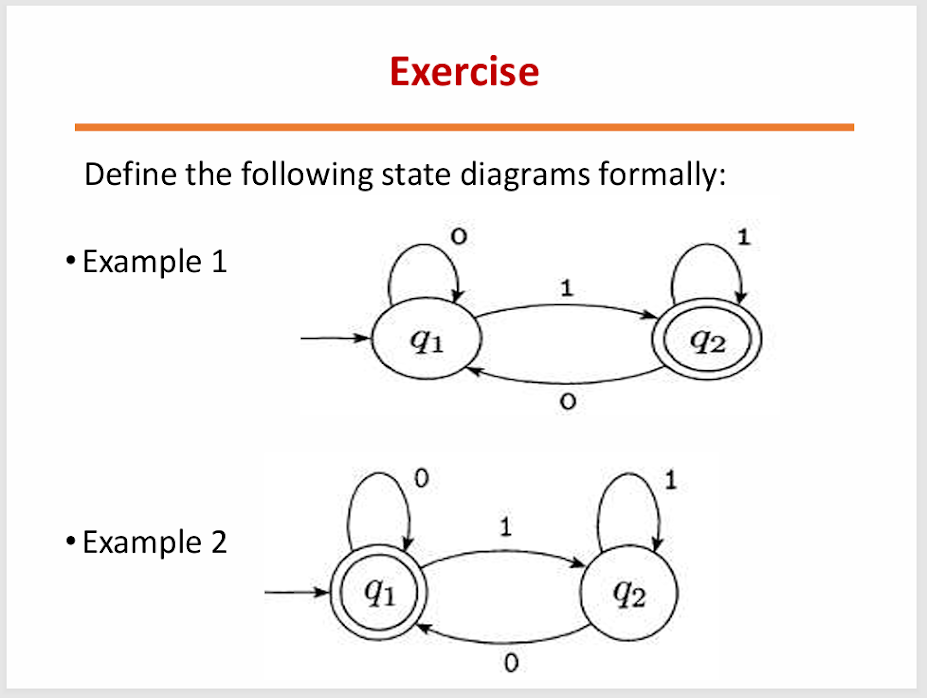Define the following state diagrams formally: Example 1 and Example 2.

Understand the Problem
The question is asking to formally define the given state diagrams, which typically involves stating the states, transitions, and acceptance conditions of the automata represented by these diagrams.
Answer
Example 1: DFA with accept state q2. Example 2: DFA with no accept states.
Example 1: Q = {q1, q2}, Σ = {0, 1}, q0 = q1, F = {q2}, δ is defined as follows: δ(q1, 0) = q1, δ(q1, 1) = q2, δ(q2, 0) = q1, δ(q2, 1) = q2. Example 2: Q = {q1, q2}, Σ = {0, 1}, q0 = q1, F = {}, δ is defined as follows: δ(q1, 0) = q1, δ(q1, 1) = q2, δ(q2, 0) = q1, δ(q2, 1) = q2.
Answer for screen readers
Example 1: Q = {q1, q2}, Σ = {0, 1}, q0 = q1, F = {q2}, δ is defined as follows: δ(q1, 0) = q1, δ(q1, 1) = q2, δ(q2, 0) = q1, δ(q2, 1) = q2. Example 2: Q = {q1, q2}, Σ = {0, 1}, q0 = q1, F = {}, δ is defined as follows: δ(q1, 0) = q1, δ(q1, 1) = q2, δ(q2, 0) = q1, δ(q2, 1) = q2.
More Information
The formal definition of a DFA (Deterministic Finite Automaton) includes states (Q), input alphabet (Σ), transition function (δ), start state (q0), and accept states (F). Example 1 accepts binary strings ending in 1, while Example 2 has no accept states.
Tips
Ensure all states and transitions are identified; forgetting a transition results in an incomplete definition.
Sources
- State diagram - Wikipedia - en.wikipedia.org
- State diagrams – Clayton Cafiero - uvm.edu
AI-generated content may contain errors. Please verify critical information